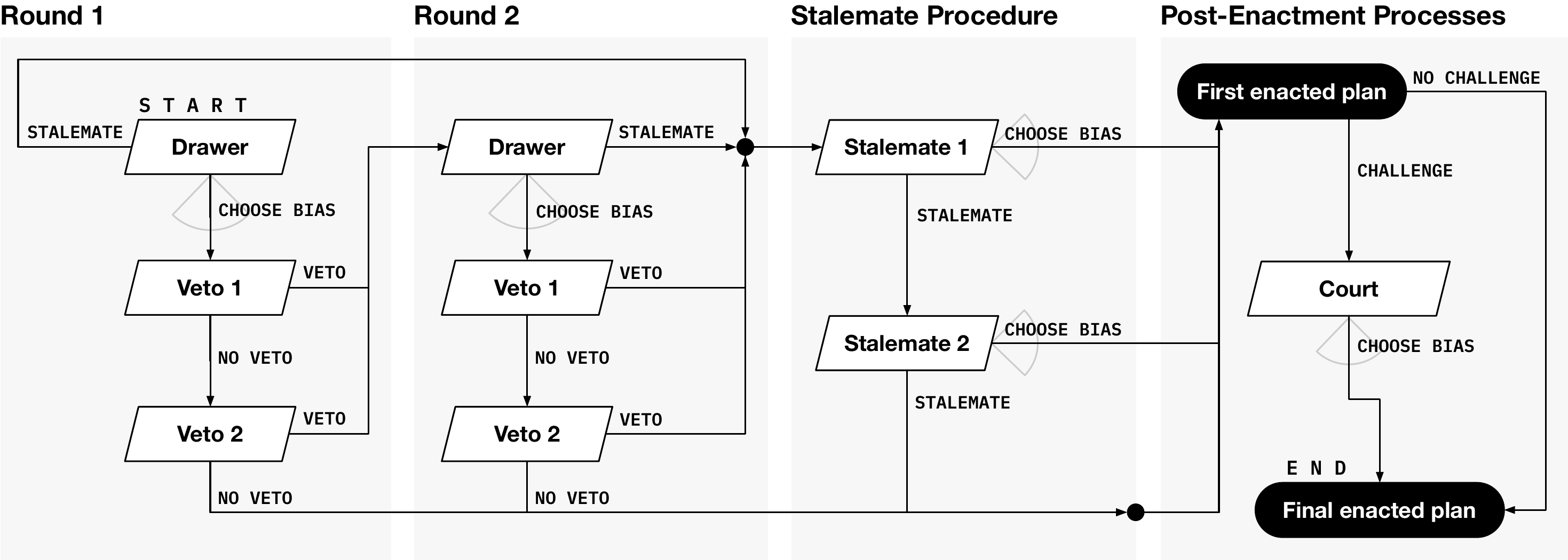Redistricting Reforms Reduce Gerrymandering by Constraining Partisan Actors
Our newest working paper combines formal theory and a continuous differences-in-differences-in-differences strategy to estimate the effect of redistricting reforms on gerrymandering. We find that reforms reduce the partisan bias of districting plans by constraining the behavior of partisan actors.
We have a new working paper out which studies the effects of redistricting reforms on gerrymandering and responsiveness. To summarize differing redistricting processes, we cast the redistricting process as a sequential game.

We then solve for the equilibrium of this game, which provides a single-dimensional score that summarizes the leeway political actors have over the partisan lean of the final plan. We those scores as doses in a continuous differences-in-differences-in-differences strategy to estimate the effect of redistricting reforms on partisan bias and competitiveness. Put shortly, we find that restrictive reforms reduce gerrymandering and increase competitiveness.
If you’re interested in reading the paper, check it out on arXiv. The full abstract is below.
Political actors frequently manipulate redistricting plans to gain electoral advantages, a process commonly known as gerrymandering. To address this problem, several states have implemented institutional reforms including the establishment of map-drawing commissions. It is difficult to assess the impact of such reforms because each state structures bundles of complex rules in different ways. We propose to model redistricting processes as a sequential game. The equilibrium solution to the game summarizes multi-step institutional interactions as a single dimensional score. This score measures the leeway political actors have over the partisan lean of the final plan. Using a differences-in-differences design, we demonstrate that reforms reduce partisan bias and increase competitiveness when they constrain partisan actors. We perform a counterfactual policy analysis to estimate the partisan effects of enacting recent institutional reforms nationwide. We find that instituting redistricting commissions generally reduces the current Republican advantage, but Michigan-style reforms would yield a much greater pro-Democratic effect than types of redistricting commissions adopted in Ohio and New York.